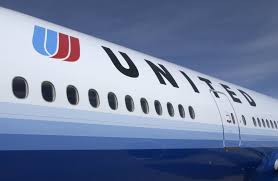Why United Airline's dress code for girls sparked PR disaster
On a flight from
Denver, Colorado, to Minneapolis, Minnesota, early Sunday morning, Shannon Watts observed a United
Airlines gate agent refuse to allow two young girls on the plane
because they were wearing leggings.
Watts took to
Twitter immediately to document the incident, decrying the apparent policing of
girls’ clothing and regarding the dress code enforcement as “sexist and
hypocritical.”
Watts objected to
the policy, saying that it sexualizes young girls who were simply wearing
comfortable clothing. She questioned if boys were subjected to the same sort of
policy.
As the incident
unfolded in real time on Twitter, United’s own social media account
began to chime in. But the airline’s responses seemed to only stir
the pot and trigger more anger. This kind of gaff is increasingly making the
case for the engagement of social media account managers with a Public
Relations background or appreciation.
Amid the
reactions, chatter, questions, jokes, and the like - all to be expected when a
social media PR disaster begins to unfold - one fact seemed to be getting lost
in the shuffle: The family members flying on United, according to the
airline’s social media account, were "United Pass Travellers" which refers to an employee standby status that is subject to a
separate set of rules and guidelines, including the dress code.
Yet, Watts was
quick to point out that the girls were
traveling with their dad, who was allowed to fly in shorts.
As written by others who commented on Twitter (many of whom claim to have travelled for years under
similar rules), perhaps it’s time for those long-held guidelines to be
changed.
Regarding the United
dress code, a website that reportedly lists dress code guideline for United employees travelling
via the Pass programme states the following attire is unacceptable:
- Any attire that reveals a midriff
- Attire that reveals any type of undergarments
- Attire that is designated as sleepwear, underwear, or swim attire
- Miniskirts
- Shorts that do not meet three inches above the knee when in a standing position
- Form-fitting lycra/spandex tops, pants, and dresses
- Attire that has offensive and/or derogatory terminology or graphics
- Attire that is excessively dirty or has holes/tears
- Any attire that is provocative, inappropriately revealing, or see-through clothing
- Bare feet
- Beach-type, rubber flip-flops
Customer Service’s
Judgment will prevail in all matters pertaining to the dress
code.
Source: Flyzed.info
Still, other
observers pointed out discrepancies, citing examples when United
seemed perfectly happy to display women in leggings and yoga attire.
Importantly, addressing
a dressing issue transcends dexterity at manipulating social media tools and
platforms. It extends to the perception than is created in the minds of flyers,
which might determine whether to continue flying with United or whether to
consider other flying options where they will be welcome wearing apparels that
make them comfortable, primarily.
A PR practitioner
would have been able to predict and pre-address such issues than try trying to
defend and rationalise what customers find offensive.
By Shannon
Watts, an eye-witness to the incident. As
reported on Yahoo!
Additional
reports by ‘Dele Dele-Olukoju, Marketing Communication
strategist and publisher of the online Marketing Communication Digest. He writes from Lagos, Nigeria. @deleolukoju +234
807 481 2389.






Comments
Post a Comment